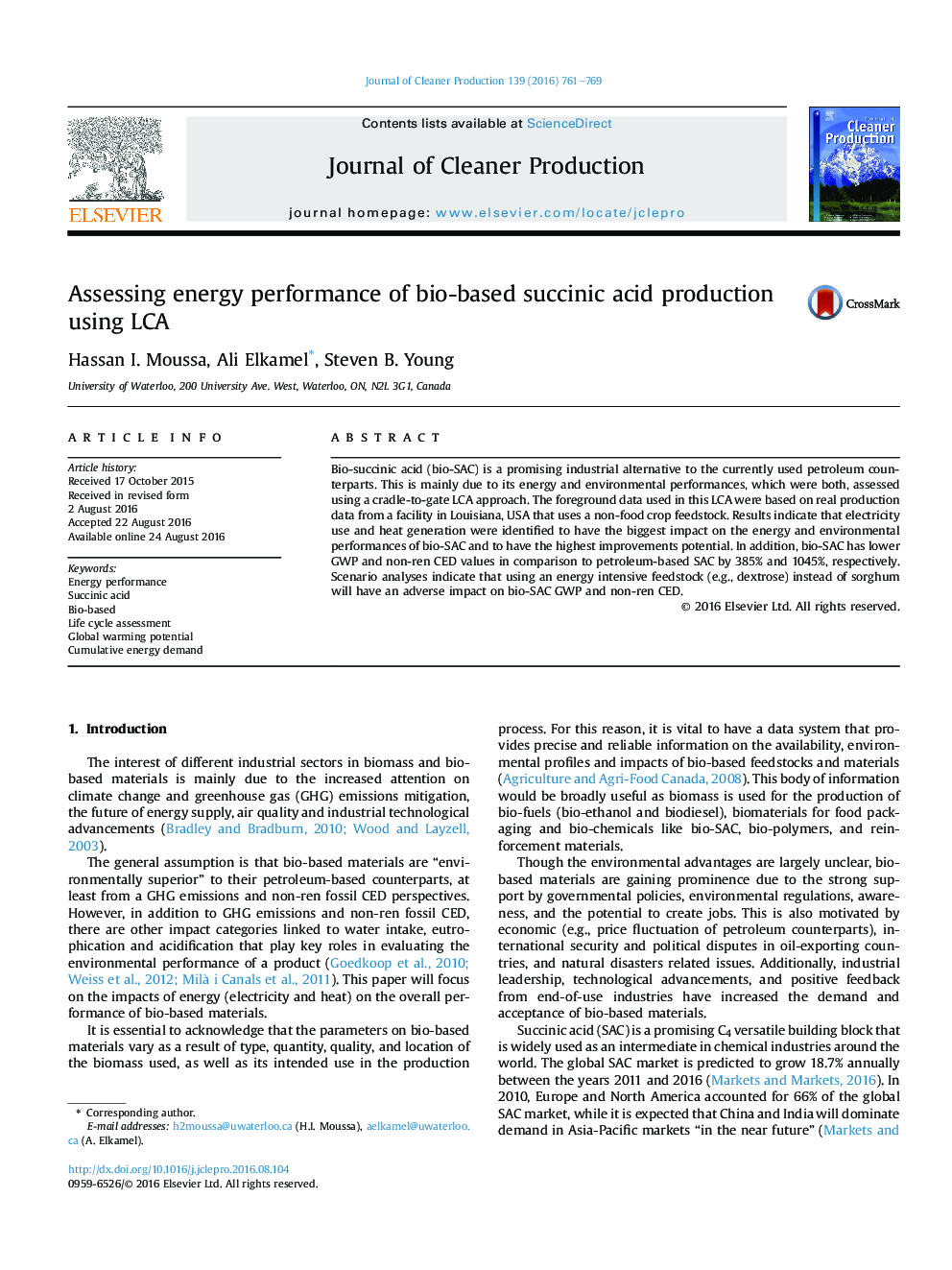| Article ID | Journal | Published Year | Pages | File Type |
|---|---|---|---|---|
| 8100665 | Journal of Cleaner Production | 2016 | 9 Pages |
Abstract
Bio-succinic acid (bio-SAC) is a promising industrial alternative to the currently used petroleum counterparts. This is mainly due to its energy and environmental performances, which were both, assessed using a cradle-to-gate LCA approach. The foreground data used in this LCA were based on real production data from a facility in Louisiana, USA that uses a non-food crop feedstock. Results indicate that electricity use and heat generation were identified to have the biggest impact on the energy and environmental performances of bio-SAC and to have the highest improvements potential. In addition, bio-SAC has lower GWP and non-ren CED values in comparison to petroleum-based SAC by 385% and 1045%, respectively. Scenario analyses indicate that using an energy intensive feedstock (e.g., dextrose) instead of sorghum will have an adverse impact on bio-SAC GWP and non-ren CED.
Keywords
Related Topics
Physical Sciences and Engineering
Energy
Renewable Energy, Sustainability and the Environment
Authors
Hassan I. Moussa, Ali Elkamel, Steven B. Young,
